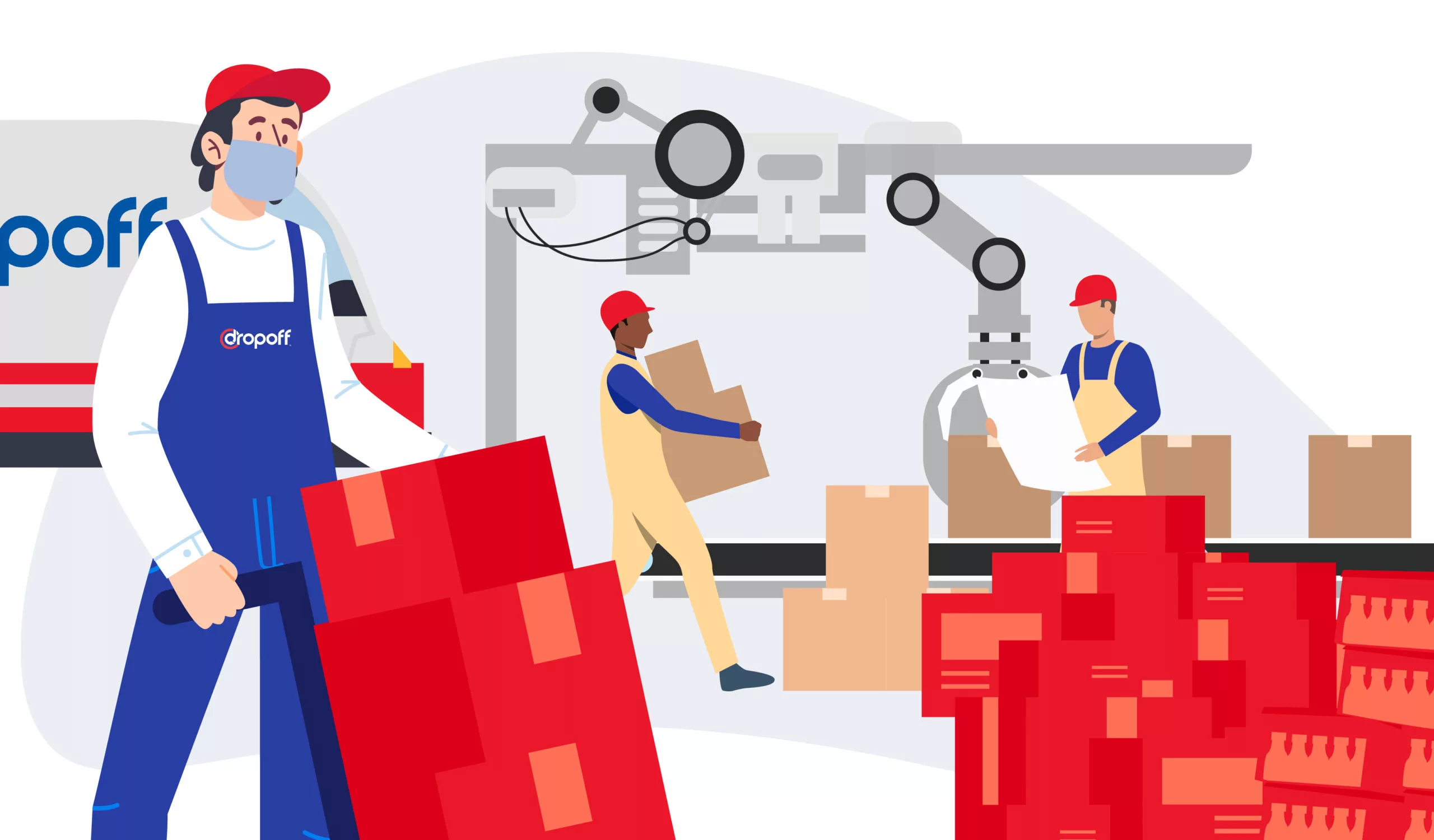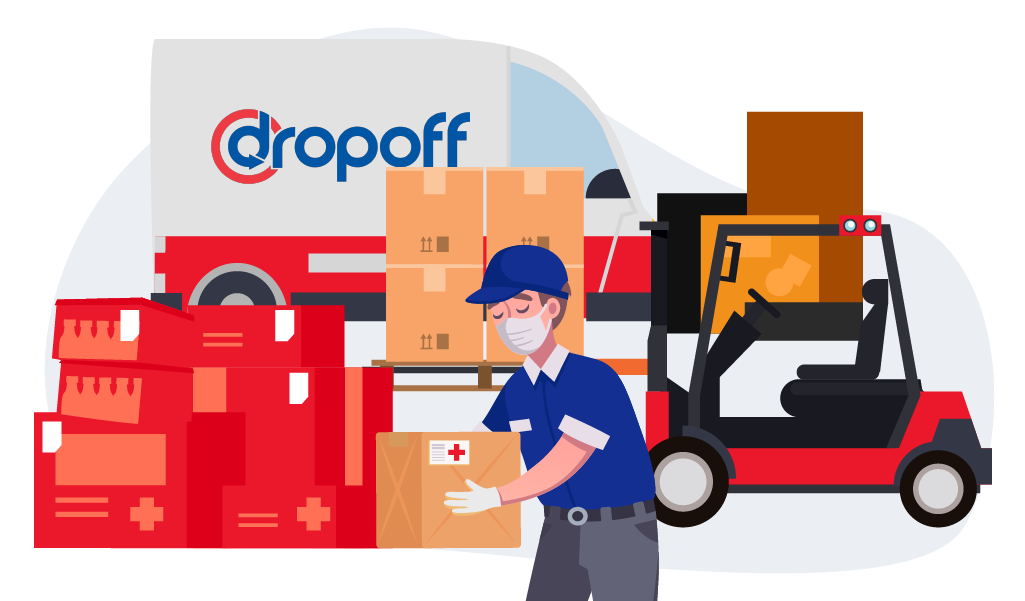Returns Management: The Most Detailed Guide For Retail and E-Commerce in 2024

With the rise of e-commerce, returns management has never been more critical in the retail industry. According to the National Retail Federation and Appross Retail, the total returns for 2023 were 14.5% of all retail sales, amounting to about $743 billion. For this reason, it has become imperative for businesses to implement an effective, efficient, and even profitable returns management process.
In this blog, we’ll explore the ins and outs of returns management services. This way, you can turn the tide around from such instances.
What is Returns Management?
Return management goes beyond the mere handling of product returns; it is a comprehensive strategy aimed at ensuring customer satisfaction, maintaining the cost efficiency of businesses, and even leveraging returns to generate revenue. This multifaceted approach involves receiving, inspecting, and processing returns, focusing on minimizing costs, optimizing inventory, and fostering positive customer experiences.
Successful return management is a critical component of a business’s overall logistics and customer service strategy, offering the potential to turn a traditionally cost-intensive process into an opportunity for customer retention and sustainable growth.
Understanding eCommerce Returns Management
The rise of eCommerce significantly elevated the importance of returns management due to the substantial increase in online shopping and subsequent return rates. In 2022, eCommerce returns reached a whopping $203.22 billion, mostly attributed to the popularity and continuous expansion of Shopify. With the ease of online transactions, customers have become more inclined to purchase items without physically examining them, leading to a higher likelihood of returns.
About 30% of online products are likely to be returned, impacting customer satisfaction, operational efficiency, and financial performance for businesses. Managing returns in online retail, with its shipping logistics and customer communication intricacies, requires strong strategies to cut costs, improve the customer experience, and build loyalty in the competitive eCommerce landscape.

How Do Businesses Implement Returns Processing?
Returns processing in businesses is a comprehensive procedure to efficiently manage returned items. Here’s how it happens:
1. Receiving Returned Items: The initial step involves collecting items returned by customers through various channels, guided by a clear returns policy.
2. Inspection and Quality Control: Upon receipt, a thorough inspection identifies damage or defects, implementing quality control measures to meet required standards.
3. Restocking: Good-condition items are efficiently restocked for resale, contributing to cost reduction and streamlined inventory management.
4. Refurbishment: Items with minor damages undergo cleaning, repairing, and testing to restore them to optimal working condition for resale.
5. Disposal: Unrepairable or unsellable items are disposed of using appropriate methods, such as recycling or sending them to a disposal facility.
6. Credit or Refund: Customers receive a credit or refund based on the company’s returns policy and the original payment method after inspection and processing.
7. Tracking and Reporting: Meticulous tracking monitors return numbers, reasons, and associated costs, providing valuable data for process enhancement.
8. Customer Communication: Transparent communication includes confirming receipt, providing updates, and informing customers of outcomes like credits or refunds.
9. Reverse Logistics: Crucial for managing the return of goods, it involves coordinating transportation from customers to manufacturers or suppliers, contributing to efficient returns processing.
Understanding Returns Management: Key Facts, Figures, and Statistics
To further understand how returns management services affect businesses and consumers alike, here are key facts and figures you should know:
- The Product Returns Management Services industry is expected to witness a 5.1% increase in market size in 2024. The US market size for this industry has grown at an average rate of 4.9% annually from 2017 to 2024.
- 83% of companies worldwide express strong concern regarding the impact of returns on profitability.
- Two-thirds of surveyed companies have a strategy to enhance the economics of returns.
- Around 59% of surveyed companies offer free return shipping for some or all items.
- Customer concerns regarding returns are varied, with 20% citing damaged products, 22% reporting items looking different, 23% receiving the wrong item, and 35% stating other reasons for returns.
- 92% of customers will likely make repeat purchases if the returns process is easy.
- 79% of consumers strongly prefer free shipping, highlighting the significance of shipping-related considerations in the purchasing decision.
- Consumer interest in free shipping is exceptionally high, as 96% say it’s their priority when going through online shops. Free returns coming in second at 76%.
- Consumers with a higher household income (> $100,000) are more likely to consider returns important (83%) compared to those with a lower income (< $25,000) at 75%.
- Clothing, shoes, and electronics are the top product categories that customers frequently return, with return rates of 88%, 44%, and 43%, respectively.
- 69% of businesses outsource their returns management processes.
Why Is Managing Returns Important?
The significance of managing returns can be dissected into several key reasons:
Customer Satisfaction and Loyalty
A swift and hassle-free returns process directly influences customer satisfaction, contributing significantly to the likelihood of repeat business and the cultivation of brand loyalty.
Reputation Management
A seamless and customer-friendly returns experience leads to positive reviews and testimonials, bolstering a brand’s image. Conversely, a complex or slow returns process can result in negative feedback, potentially leading to lost customers.
Environmental Considerations and Sustainability
The back-and-forth shipping of products contributes to the carbon footprint associated with transportation. Streamlining the returns process not only benefits the business but also aligns with sustainable practices, reducing the environmental impact of returns.
Profitability and Cost Management
Efficient returns management strategies are essential for minimizing associated costs, ensuring that returns do not disproportionately impact the overall profitability of the business.
Competitive Edge
Businesses that offer transparent, convenient, and customer-centric returns processes gain a competitive edge, attracting and retaining customers in a crowded market.
Compliance and Regulations
Adhering to return policies and regulations is essential to avoid legal complications and maintain the trust of both customers and regulatory authorities.
Data Collection and Analysis
Understanding the reasons for returns, customer preferences, and trends can inform strategic decisions, product improvements, and overall business optimization.

What Is The Difference Between Returns Management and Reverse Logistics?
While returns management encompasses the entire process of handling returns, reverse logistics specifically refers to moving goods from their supposed final destination to their source. For instance, reverse logistics happens when products are shipped from customers to retailers or when raw materials are shipped from manufacturers to suppliers.
Reverse logistics plays a crucial role in minimizing return costs, streamlining the transportation process, and expediting the refund or exchange procedures. Effective reverse logistics ensures that returned items are efficiently integrated back into inventory, reducing overall processing time and associated expenses. A well-orchestrated reverse logistics system is instrumental in maintaining operational efficiency, enhancing customer satisfaction, and ultimately contributing to the overall success of a retail or e-commerce business.
Key Trends on Return Management 2024
To stay ahead of the market, it’s imperative to learn the key trends of return management in 2024:
a. Increased Use of Artificial Intelligence (AI)
AI is pivotal in streamlining the returns management process by enhancing efficiency and customer satisfaction. In fact, as of now, more than 36% of businesses have successfully integrated AI solutions into their logistics operations, including their workflow for returns management process.
AI-powered chatbots facilitate seamless customer service interactions, providing real-time assistance in addressing queries related to returns. Additionally, AI aids in data analysis, allowing businesses to identify patterns and trends in return data, leading to more informed decision-making and reduced operation costs. Moreover, AI contributes to personalized customer experiences by understanding individual preferences, leading to tailored solutions and ultimately minimizing the probability of returns.
b. Advancements in eCommerce
The rise of eCommerce is far from slowing down, as it reached an all-time high in 2023, with approximately 24 million online retail stores operating worldwide.
Aside from increasing numbers of eCommerce stores, online solutions enable businesses to minimize the risk of returns. There are now virtual try-ons, personalized, detailed product information, and automated customer service, all streamlined to a smooth customer shopping experience. These advancements aim to enrich the online shopping experience, allowing customers to make more informed choices and ultimately reducing the likelihood of returns.
c. Greater Emphasis on Sustainability
There’s no denying that logistics, including returns management, raises significant environmental concerns.
Fleet management is the most imperative part of a sustainable returns management operation, as the logistics trucking industry produces approximately 1.2 billion metric tons of carbon dioxide worldwide. Aside from this, a closed-loop system should be implemented where materials, including packaging, are reused or recycled after use instead of being disposed of as waste.
d. Mobile Optimization of Supply Chain Management
Mobile optimization in logistics processes is crucial for improving returns management. It ensures a seamless and convenient experience for customers and businesses by enabling easy initiation of returns, real-time tracking, and efficient communication through mobile platforms.
The transparency provided by mobile optimization reduces uncertainties for customers and enhances overall satisfaction. From a business perspective, it streamlines internal logistics operations, leading to quicker returns processing and improved coordination across various stages of the returns management process. Embracing mobile optimization ultimately contributes to a more efficient and customer-friendly returns experience.
e. Customized Logistics Solutions
Customized logistics solutions enable businesses to address unique challenges, streamline operations, and enhance efficiency. These tailored approaches can reduce the likelihood of returns and foster a more seamless and satisfactory customer experience.
Fortunately, numerous 3PL logistics solutions offer customized solutions, allowing businesses to align their returns management process to their revenue goals, business objectives, and overall business nature. This is specifically important for key industries, such as healthcare businesses offering Direct-to-Patient logistics.

Tips for Implementing Return Management Services in 2024
Are you thinking of stepping up your return management process in 2024? It’s high time for that! Here are some best practices that you can implement in your return management system this year:
a. Focus on Your Returns Policy
8 in 10 consumers read your returns policy before purchasing. Enhance customer trust and satisfaction by maintaining a clear and transparent returns policy. Display it prominently, ensuring it is easily understandable, and includes comprehensive information on the return process, timelines, and conditions.
Moreover, adopt a proactive approach by continuously analyzing return data to identify trends and areas for improvement in your returns policy. Regular reviews enable businesses to stay adaptive and refine their processes to align with evolving customer expectations and industry standards.
b. Use Contextual Product Descriptions and Images
87% of online shoppers consider product descriptions to be crucial when making a buying decision. Mitigate the risk of returns resulting from mismatched expectations by providing detailed and accurate product information.
Furthermore, explore using contextual product descriptions and photos. These descriptions go beyond generic details, offering information tailored to the user’s needs and preferences. Accompanied by visually engaging photos, contextual product descriptions create a comprehensive understanding of the product’s features, benefits, sizing, and potential applications.
c. Document Returns Effectively
Streamline your return management process by emphasizing thorough documentation. Clear and comprehensive records help track, analyze, and improve the overall returns experience. If possible, request customers to provide photos and descriptions of their orders before initiating a return.
d. Communicate with Logistics Providers
Maintain transparent communication with your logistics provider about your returns management process. A clear understanding ensures efficient handling of returned items and contributes to a smoother logistics operation and delivery orchestration.
e. Integrate Returns with Supply Chain
Ensure returns management is seamlessly integrated into various facets of your supply chain, such as your warehouse management, fleet monitoring, last-mile delivery implementation, and more. By incorporating returns into your overall supply chain strategy, you enhance efficiency and reduce the complexities of handling returned products.

How Dropoff Can Help You with Returns Management
Dropoff’s same-day and last-mile delivery services are pivotal in optimizing returns management processes. With same-day deliveries, businesses can expedite the return journey of products, reducing the overall turnaround time. This swift service not only enhances the customer experience by providing timely returns but also streamlines the entire returns management workflow.
The same goes for last-mile deliveries. This final leg of the delivery journey is often the most complex, and Dropoff’s reliable and efficient last-mile services ensure that returned items reach their destination accurately and promptly.
Most importantly, Dropoff is adept at catering to the specific needs of SMEs, including Shopify eCommerce stores. For these businesses, seamless returns operations are crucial, and Dropoff ensures that the return process is not only efficient but also tailored to the unique requirements of smaller enterprises.
By leveraging Dropoff’s capabilities in same-day and last-mile deliveries, businesses can enhance the agility of their returns management, contributing to reduced costs, improved customer satisfaction, and a competitive edge in the ever-evolving retail and eCommerce landscape.
Final Thought
Mastering returns management in 2024 involves a holistic approach, integrating technology, sustainability, and customer-centric strategies. By staying informed on the latest trends and implementing effective solutions, businesses can navigate the challenges and optimize the returns management process for success in the dynamic retail and e-commerce landscape.
FAQs:
Returns management involves handling returned products and optimizing the journey of a returned item to minimize costs and maximize value.
Managing product returns includes receiving, inspecting, restocking or refurbishing, processing refunds or exchanges, and clear communication with customers.
Shopify simplifies returns management with customizable policies, automated processes, and efficient tracking through its platform.
In supply chain management, a return refers to the process of handling products sent back by customers, including logistics, quality control, and customer communication.






